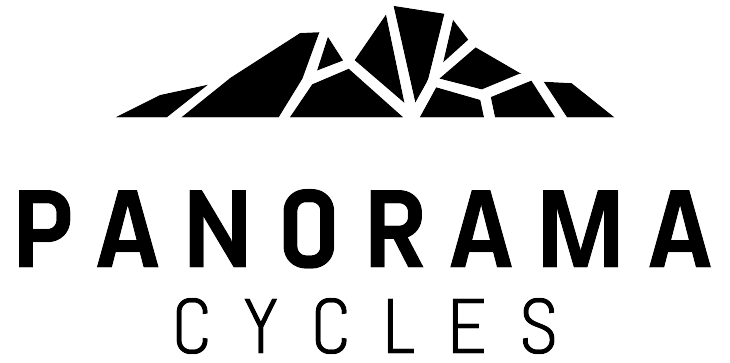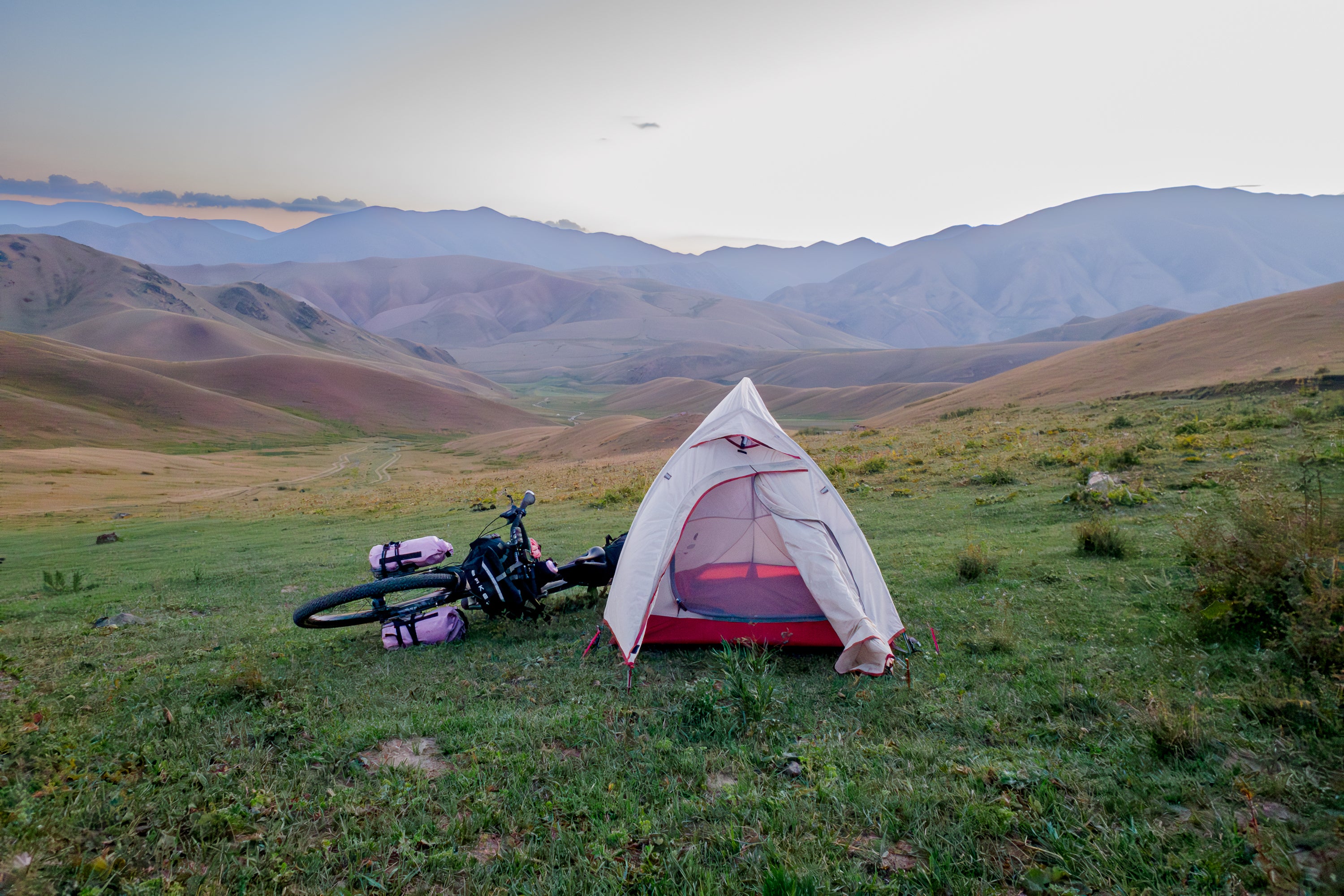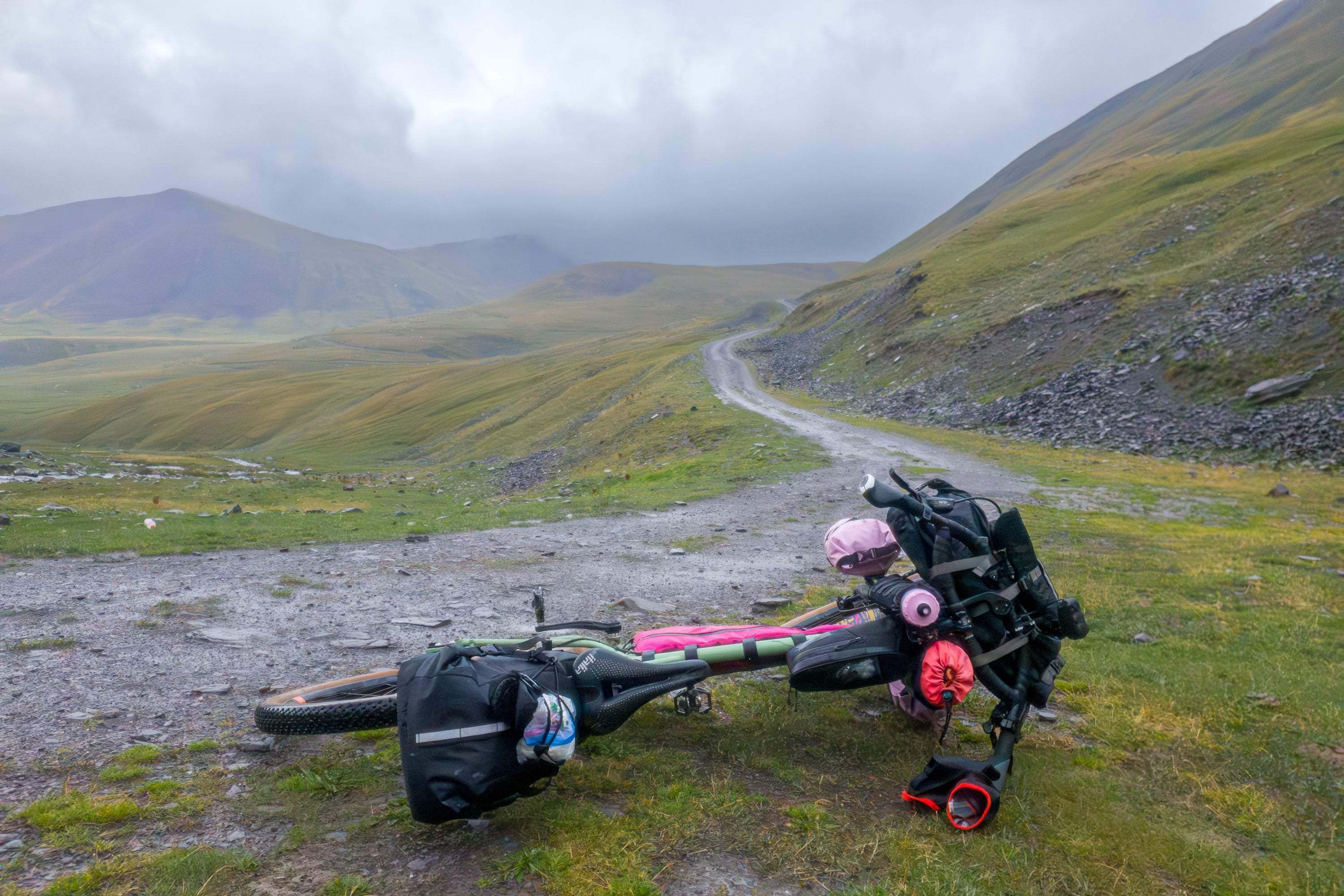
Lessons from the Silk Road Mountain Race 2024
During the summer of 2024, our ambassador Marie-Pierre Savard took part in the Silk Road Mountain Race, a 2000-km race across the mountains of Kirghizistan. Here are some lessons she learned along the way!
Words & photos : Marie-Pierre Savard
In August 2024, I decided to dive into the adventure of the Silk Road Mountain Race, a nearly 2,000-kilometer mountain bike race in Kyrgyzstan. Considered one of the most challenging ultra-cycling events in the world, it was also my first time entering a race of this kind… In fact, apart from the Big Red and the Log Driver’s Waltz in Quebec, I hadn’t done much timed racing before! But having already ridden some long distances and experienced many solo bikepacking adventures in remote places, I knew I had the perseverance to take on such a challenge—especially since I had actually biked in this country back in 2011.
Of course, it wasn’t easy, but it taught me so much about myself and what a race-style adventure really is… Here are a few lessons learned from this extreme, yet incredible journey!


Savor the moment—but not too much
To officially complete the 2024 edition of the SRMR, you had to ride the 1,940 kilometers in under 15 days. Divided into four timed stages, I’m proud to say that—even though I scratched 160 kilometers before the finish line—I managed to complete three out of the four stages within the time limits! I tried to stay in the present moment as much as possible, and that mindset carried me quite far into the adventure. That, and maybe being slightly naive!
But that very focus on the present also worked against me, as I quickly lost sight of the full scope of the challenge—with its deadlines and upcoming difficulties. It was no surprise that the final stage was the toughest (yet the shortest in terms of allotted time), so I should have planned for much more time to tackle it. I hit a wall on day 14, when I realized it was mathematically impossible for me to finish within the time limit.
If I were to do it again, I’d allow myself to look ahead and picture myself at the finish line. I’d keep that image in mind, instead of constantly telling myself not to get my hopes up! I also planned my entire race and strategy around a 14-day timeline, not 15. Cutting off that final 24 hours took away a good buffer I could’ve used along the way, and could have allowed me to reach the first checkpoints with a bit of margin. But of course, that’s easier said than done!


Eat—as much as possible
During the SRMR, eating enough and eating well was a real challenge. With few resupply points along the way—and because they weren’t Western-style convenience stores like we’re used to—my usual nutrition habits were completely thrown off.
On top of that, the fatigue, altitude, and harsh climate all took a toll on my appetite. By the end of the two weeks on the bike, I had lost 10 kilos. Oof! That level of undernourishment became one of the main reasons I had to abandon the race — I just didn’t have the strength or energy to keep going.
I really wish I had followed a more specific nutrition plan, with minimum intake targets and a list of superfoods or meals that are easy to find locally. With the language barrier, it was sometimes hard to know what was behind the counters of those mysterious little shops—aside from the usual Snickers, ramen, and Coca-Cola. But these oversights taught me a lot about just how crucial nutrition is in any kind of athletic journey.
And one more lesson passed on by my stomach: when possible, don’t make big decisions on an empty stomach! Have a solid meal before making an important call—it's a moment of pause that can help you see things more clearly and refuel your energy. It might not change the outcome, but it’ll probably cheer you up!


Want to know more about Marie-Pierre's set up?
Check out this video on Bikepacking.com!
-
Warm and waterproof clothing is absolutely necessary
During my prep, one of my biggest fears was being cold during the race. Officially, riders are told to be ready for temperatures ranging from -10°C to +40°C, and because of my concern, I took that advice very seriously. It definitely paid off—unlike many others, I never came close to hypothermia or felt dangerously cold. I also think my experience with winter cycling and my tolerance for Québec’s cold helped, but bringing waterproof and breathable gear (jacket, pants, mitts, socks), along with a full merino wool outfit from head to toe, made all the difference. Even if it took up quite a bit of space, it was worth it for the peace of mind—knowing that unless the weather turned truly extreme, I’d stay relatively dry and “warm” at all times.
Arrive early and leave sooner rather than later
For this project, I was lucky to spend four weeks in Kyrgyzstan, divided like this: one week before the race, two weeks for the SRMR, and one week after.
However, I wish I had arrived two weeks before the race instead of just one. Getting to know the country, properly acclimatizing to the altitude, and making sure both your gear and your body are in top shape really takes time. It also gives you a buffer in case something goes wrong—like a delayed or lost bag, for instance.
And after the race, that last week felt pretty long… I was exhausted and a bit down, so I didn’t really feel like playing tourist! That said, I did make the most of it by eating and discovering some delicious local specialties, which definitely brought a smile back to my face!
That’s it! I hope sharing this experience proves useful to anyone preparing for an ultra-cycling event—or planning a visit to Kyrgyzstan, a country that definitely deserves more than just a quick stopover.
Curious about exploring Kyrgyzstan by bike—but in a less extreme way?
This loop, inspired by the 2024 Silk Road Mountain Race, offers a shorter and less rugged alternative: 👉 https://ridewithgps.com/routes/50157660













